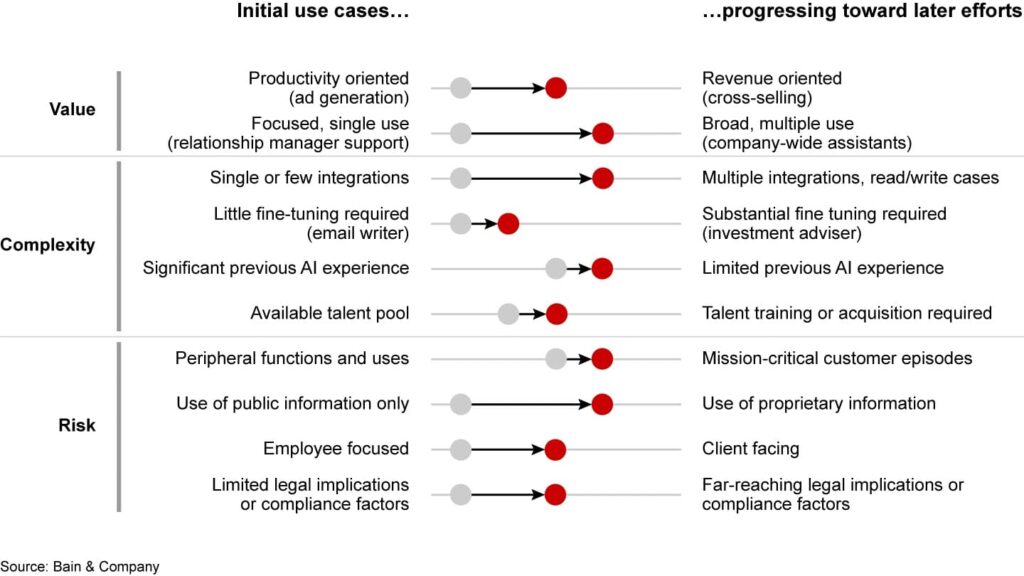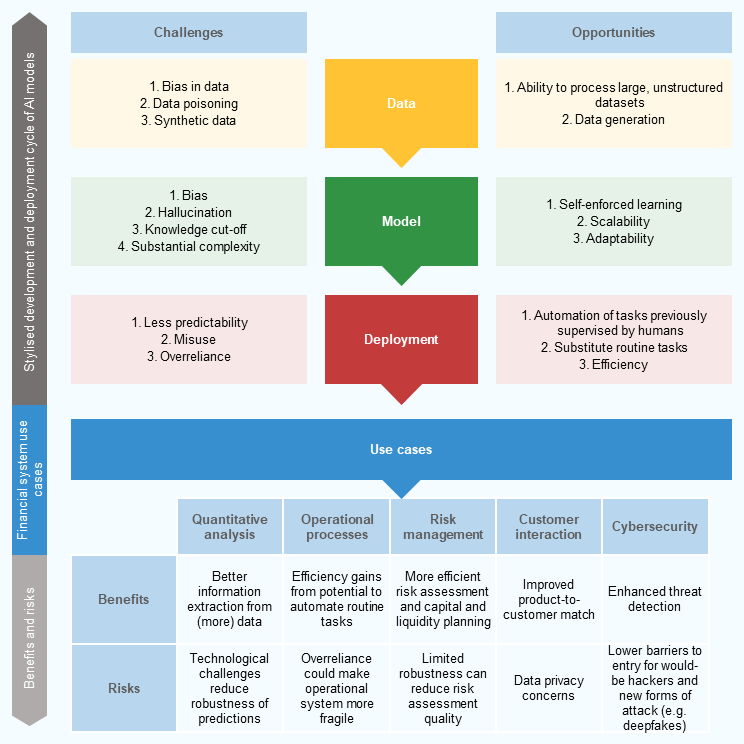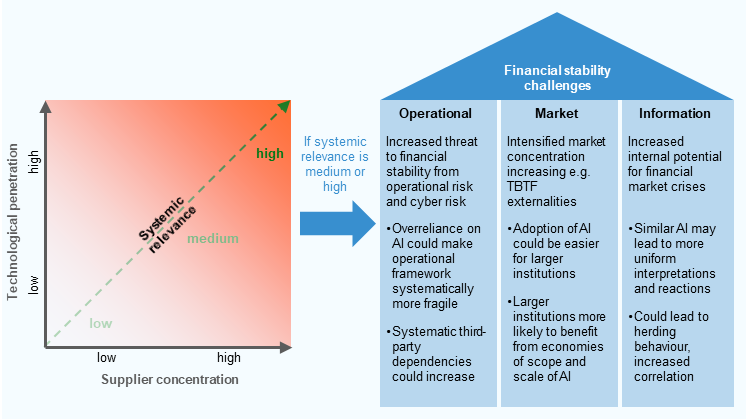AI affects the financial sector in both efficiency gains and in risks for financial stability.
We know AI will have a major effect, but not how
AI enhances growth opportunities in both the short term (efficiency) and long term (innovation). The concrete cost of this includes significantly higher energy consumption, which could increase further when quantum computers become commercially available, even though the timing remains uncertain..
No one knows how much, how quickly, or in what ways we will integrate AI. Futurists predict that we will converge with AI and make it a part of ourselves. Notable voices like Ray Kurzweil, Elon Musk, and Sam Altman suggest this. The prospect of becoming better, stronger, and more successful versions of ourselves has always driven humanity. As social beings, we constantly seek comparative advantages. In healthcare, futurists foresee advancements such as brain implants (e.g., Elon Musk’s Neuralink) and nanobots..
However, we do know AI will challenge trust, the foundation of the financial system
The Turing criterion for AIis the point at which we can no longer distinguish between a human and a machine. This introduces risks to the foundation of trust.
Trust is the bedrock of the financial system (fiduciary principles). For instance, the word "credit" derives from the Italian word "credato," meaning the belief that loans will be repaid. The more debt exists in the financial system, the greater the depth of trust required.
Banks and central banks are therefore intensely focused on understanding the development and long-term implications of AI. Currently, AI dominates discussions, analyses, and innovations within the BIS , much like CBDCs (central bank digital currencies) did five years ago.
Banks are quick to adopt AI tools, creating challenges for central banks
In the spring, consultancy Bain published a study on the use of AI in the financial sector. They observed that AI is being integrated across all processes, from credit assessments and customer service to risk management and direct operations. Trust in AI has grown to the point where it is being used more decentrally and integratively, as detailed below.
This challenges central banks, as the faster and more precisely AI is applied, the greater the risk of reduced transparency and the emergence of systemic risks (domino effects). Financial institutions' AI systems must therefore be monitored by central banks' own AI, which must remain slightly sharper and broader to anticipate risks.
In the EU, uncertainty persists, despite its leading position in legislation
The ECB's primary concern revolves around AI's self-learning and spontaneously evolving nature, the morphogenetic aspect. While AI can clean up datasets, biases and hallucinated raw data can cause significant harm. Public trust is built on legal certainty derived from continuity and transparency.
The European Stability Mechanism (ESM) shares concerns about financial stability, noting that new risks may arise from AI, primarily the potential for trust crises to emerge in ultra-short timeframes. Historically, rumor storms have triggered bank runs, which remain the typical scenario for widespread trust loss and financial crises. AI could amplify and accelerate such rumor storms.
The ESM believes much can be prevented, emphasizing that the EU’s AI regulation limiting specific applications is a step in the right direction. However, the ESM also acknowledges that the drive for comparative advantages has always led humanity to push boundaries. Doping, for instance, extends beyond sports. The ESM highlights the need for EU standards to be adopted by organizations like the OECD, the Basel Committee, and IOSC.
Internationally, BIS is also advanced and concerned
The Basel Committee, operating under the BIS, has made AI its top priority The BIS is developing tools to predict the effects of climate change on the financial system and to forecast inflation.. Additionally, the BIS is focused on the impact of quantum computers, which will exponentially increase computing power and leverage quantum mechanics principles like superposition and entanglement for encryption. This will create the world's most secure encryption. Quantum computers may thus secure some of what AI threatens to compromise, such as confidentiality.
Loss of trust can arise from many sources. Ultimately, it will depend on human judgment. As biological beings, we are equipped with fear, which distinguishes us fundamentally from a replicable program. Our control over AI fundamentally lies in how we turn our fear into an advantage.




